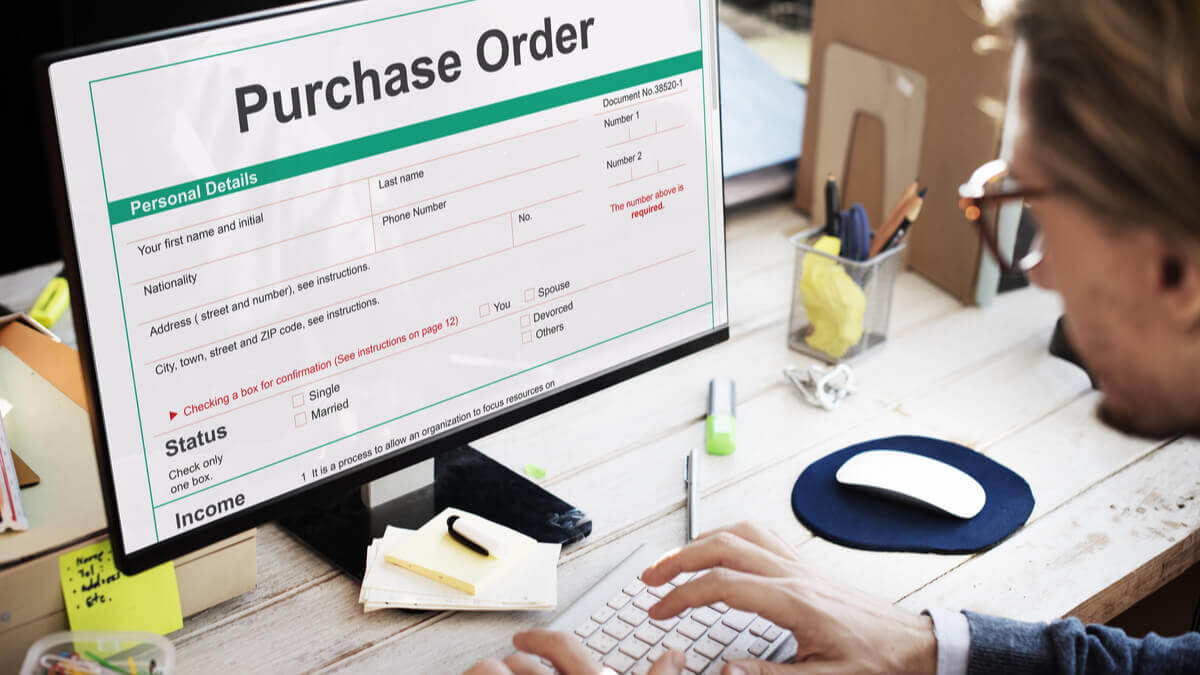Hiring Independent Contractors in Canada: A Complete Guide for Businesses
Learn how to hire independent contractors in Canada. Understand legal rules, tax responsibilities, and how to avoid misclassification with this guide.

A purchase order, commonly abbreviated to PO, is a legally binding document that confirms a business’s intent to buy goods or services from a supplier.
It details the full list of items being purchased including quantities, payment terms and agreed delivery dates.
There are multiple reasons to issue a PO. For one, it helps you get on top of cashflow management as you know how much money will be leaving your account in a given period, so you can plan and budget accordingly.
It’s important to understand the PO meaning, since many businesses use them to create a paper trail for their bookkeeping records.
Download your free PO template from Wise
A PO, or purchase order, is a legal document issued from a buyer to a vendor or supplier, to confirm that payment will be made for goods at a later date.
A purchase order should contain the amount of money due to be paid to the seller. It should also show the method of payment and a concrete date for the agreed-upon payment.
A purchase order can be useful for creating good long-term relationships with suppliers, as having a clear expectation for the order minimizes the risk of dispute on both ends.
For example, if you run an organic fashion company and have to source your textiles from a factory in India, you can issue a purchase order to the overseas supplier. The supplier will see exactly which textiles you require, and accept if they have the necessary inventory to fulfill it.
You can also set up recurring purchases with a standing purchase order. This is useful if you need to order a set amount of the same textiles every six months. A recurring purchase order uses the same PO number, so the supplier can easily identify your PO each time.
| Read on to find out: |
|---|
The formal purchase order document can help business owners with bookkeeping efforts, but it’s an often misunderstood concept.
So what purpose does a purchase order serve?
A purchase order is considered a legal contract between the buyer and seller. It is important to note that a PO is only legally binding once it has been approved by the vendor or supplier. This is to protect against cases where the supplier may not have the goods requested.
By issuing a PO, you’re agreeing to pay for the goods described at a future date once confirmed by the supplier. This helps your business foresee what accounts payables to prepare for. It also helps you better manage inventory if your business is goods-based.
If your business has a dedicated purchasing or procurement team, then purchase orders can form part of a robust purchase approval process.
If there is a need for goods or supplies within the company, a request is sent to the procurement team, the team can approve or reject the order based on budget and supporting documents. If the order is approved, the PO is prepared and sent to the supplier.
Once the goods are received and the invoice comes in, the PO can also be used to check that the invoice matches the agreed order. This way, when you balance your books you can check that they’re 100% accurate.
To make a purchase order, you’ll have to go through the following steps:
There are several important pieces of information to include on a PO, which are as follows:
Purchase orders can help business owners, but they can also be a burden.
Pros:
Cons:
Purchase orders can help you overcome and avoid various issues in the day-to-day operations of your business.
Here are some of the main issues you can prevent by creating and using purchase orders:
| ✈️ Paying for international orders? You can get a better deal by using Wise Business. Get the mid-market rate when you use Wise, and send money in the local currency. |
|---|
An invoice is as important to a business as a purchase order, if not more.
So while the seller issues invoices to buyers, buyers can issue purchase orders stating intent to buy a certain quantity of goods. In terms of a timescale, the purchase order is only ever issued before an order is fulfilled. The invoice is typically issued afterward upon completion of the sale.
| You can read more about the differences in the full guide to purchase orders vs invoices. |
|---|
Wise Business can help you save big time on international payments.
Wise is not a bank, but a Money Services Business (MSB) provider and a smart alternative to banks. The Wise Business account is designed with international business in mind, and makes it easy to send, hold, and manage business funds in currencies.
Signing up to Wise Business allows access to BatchTransfer which you can use to pay up to 1000 invoices in one go. This is perfect for small businesses that are managing a global team, saving a ton of time and hassle when making payments.
Some key features of Wise Business include:
Mid-market rate: Get the mid-market exchange rate with no hidden fees on international transfers
Global Account: Send money to countries and hold multiple currencies, all in one place. You can also get major currency account details for a one-off fee to receive overseas payments like a local
Access to BatchTransfer: Pay up to 1000 invoices in one click. Save time, money, and stress when you make 1000 payments in one click with BatchTransfer payments. Access to BatchTransfer is free with a Wise Business account
Auto-conversions: Don't like the current currency exchange rate? Set your desired rate, and Wise sends the transfer the moment the rate is met
Free invoicing tool: Generate and send professional invoices
No minimum balance requirements or monthly fees: US-based businesses can open an account for free. Learn more about fees here
*Please see terms of use and product availability for your region or visit Wise fees and pricing for the most up to date pricing and fee information.
This publication is provided for general information purposes and does not constitute legal, tax or other professional advice from Wise Payments Limited or its subsidiaries and its affiliates, and it is not intended as a substitute for obtaining advice from a financial advisor or any other professional.
We make no representations, warranties or guarantees, whether expressed or implied, that the content in the publication is accurate, complete or up to date.

Learn how to hire independent contractors in Canada. Understand legal rules, tax responsibilities, and how to avoid misclassification with this guide.

Learn how to hire independent contractors in Brazil. Understand tax rules, compliance, contracts, and how to avoid misclassification risks.

Learn how to open a business bank account in Finland with this guide. Get essential info and steps for setting up your business finances.

Learn how to open a business bank account in Switzerland. Discover the essential steps to set up your business finances.

Learn how to open a business bank account in France. Get essential tips and steps for setting up your business finances.

Learn how to open a business bank account in Germany. This guide offers localized steps for setting up your business finances efficiently.